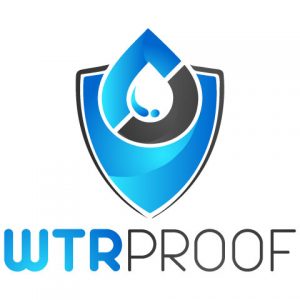There are many types of waterproofing materials. As you should know, waterproofing is going to make a big difference in your life. Without the right type of waterproofing, your house is going to run into major problems. Waterproofing is vital for many purposes. It is great at home, in your vehicle, for various clothing items, and even for the family boat. Just remember that not all waterproofing materials are suitable for all purposes. Therefore, you need to make sure that you get the right types of waterproofing materials for your individualistic needs.
There are many types of waterproofing materials. Some of the best and most common include; Polyurethane, Cementitious Coating, EPDM Rubber, Rubberized Asphalt, Thermoplastic, Bituminous Membrane, and PVC Waterproofing Membrane. Within this article, you’re going to learn more about the common types of waterproofing materials, the benefits they possess when used properly, and their overall cost.
Polyurethane
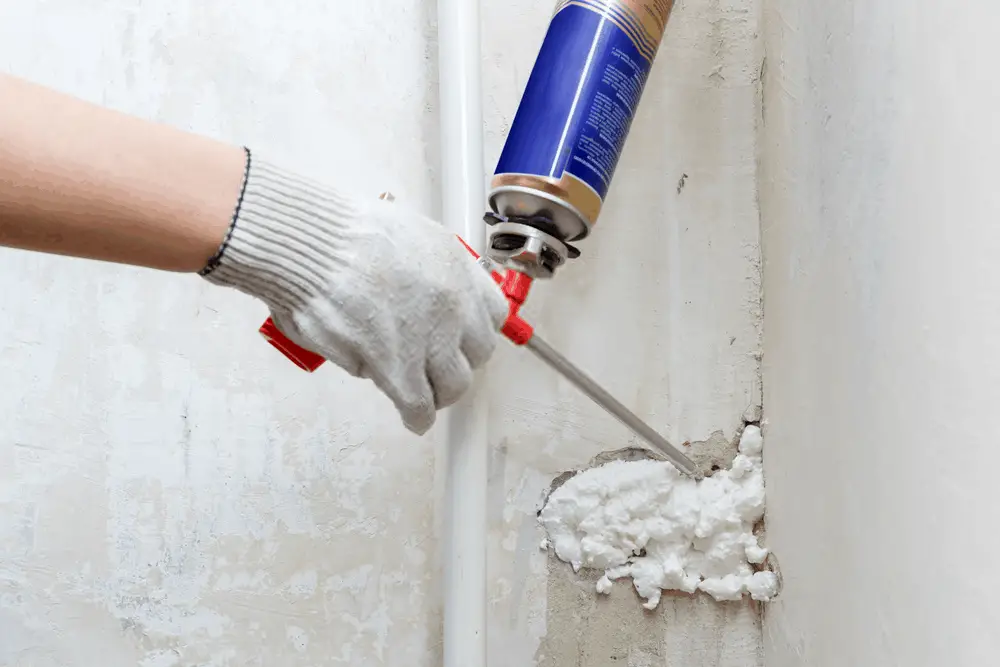
While there are many types of waterproofing materials, not all of them are equal. For many people, polyurethane will be the best option. It offers numerous benefits and many of them are not available with the alternatives. Therefore, you should learn as much as you can about this type of waterproofing material before investing your time or money. Doing so will ensure that you’re able to find the best material for your specific needs. This material is going to offer a seamless waterproofing membrane. This can make a big difference. On top of that, this waterproofing material will fill all capillary cracks. It can decrease the concrete’s water absorbency. Another thing to note is that this material will harden the concrete’s uppermost surface.
It does so by penetrating the surface very deeply. There are some risks here. You need to understand that this material can be dangerous. If the material touches your skin, there is a risk that you’re going to experience adverse health effects. They might be short or long term. At the same time, they can be dangerous when inhaled. It’s pertinent to let a professional handle the application process. Otherwise, you’re going to be putting yourself at risk. Polyurethane liquid membrane can be utilized for many purposes. For instance, it can add waterproofing to pedestrian decks, water tanks, ponds, balconies, roofs, bridges, parking decks, and so much more. It’s a very versatile material that can be used for many applications.
Polyurethane liquid membrane offers a wide variety of benefits. For example, it can help resist water and it will not cause any joints or leak risk areas. The material is water vapor permeable too. It will provide adhesion for the full surface. Another thing to note is that polyurethane is great because it can resist oils, detergents, and other chemicals. It is excellent in this specific category. On average, it is estimated that this material has a working life of 25 years or so. This ensures that it is going to keep your home protected for a long duration.
This type of roofing material is somewhat more expensive than the others. You should expect to pay around $70 bucks for a bucket. On average, it will cost as much as $10 per square meter. However, the price might be cheaper than that. Ultimately, the material works well for the intended purpose but there are some risks involved. Therefore, you should be cautious when investing in this material.
Cementitious Coating
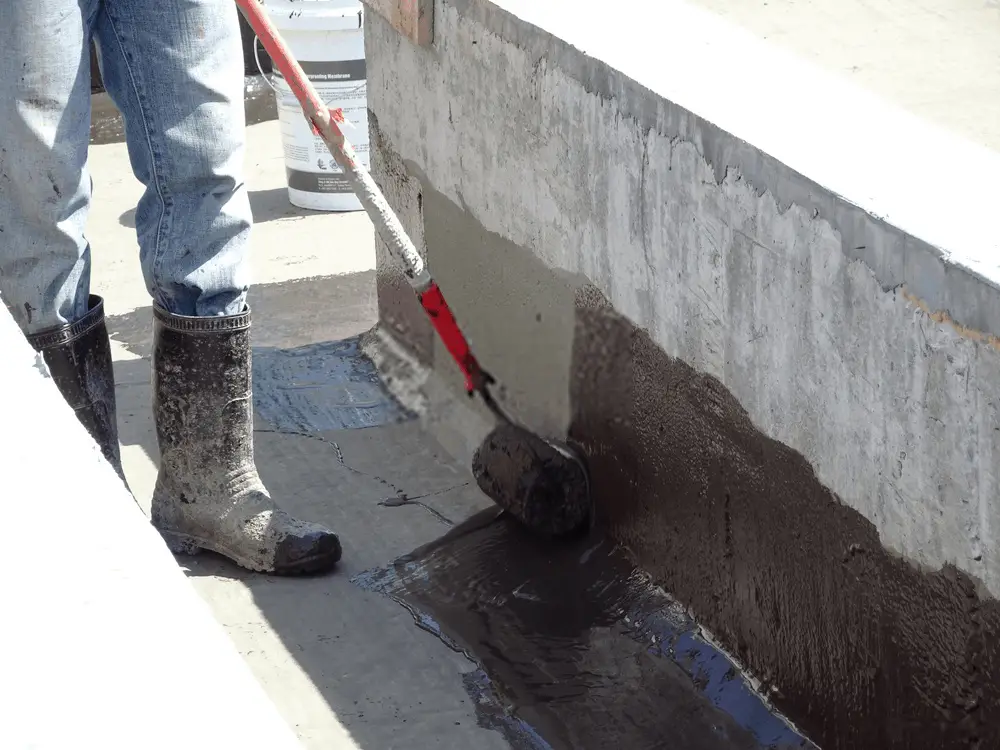
Cementitious coating is a powder that consists of sand, organic and inorganic chemicals, and silica-based substances. When the active ingredients are combined with lime, it causes a hydration reaction, creating a waterproof seal. Many experts prefer working with this type of coating because it is so easy to utilize.
As mentioned above cementitious waterproof coating is extremely easy to utilize. Most brands recommend mixing the coating with a specific amount of tap water before applying. Some experts utilize an acrylic additive to create a more durable, solid coating.
Mix the cement product per the instructions provided by the manufacturer. Add the cementitious coating and mix thoroughly. If you opt to utilize an acrylic additive, you can add that after the cementitious coating.
Like any other type of waterproofing product, cementitious has both advantages and disadvantages. The biggest advantage of the product is it offers an easy application. The biggest disadvantage is its lack of flexibility. This is probably because cement doesn’t have a lot of flexibility to begin with. While concrete does flex, bend, compress, and stretch, it is only minimal.
Cementitious waterproofing products are utilized for various purposes. Professionals utilize them to create a waterproof seal over concrete structures, such as foundations, walls, sidewalks, and walkways. You can utilize this type of waterproofing for a broad range of concrete applications. If you follow the manufacturer instructions, it will provide a durable watertight seal that will last for many years.
These waterproofing products are also utilized to treat water-retaining structures, concrete tunnels, and tanks, as well as water treatment facilities. Cementitious waterproofing products are available in spray and liquid forms. It really depends on what you are going to be utilizing the product for, this is how you’ll know which type to buy. Smaller surfaces can easily be treated with the spray formula. The liquid formula will work better for larger surfaces.
When utilizing cementitious waterproofing coating to treat potable water tanks, you need to make sure it meets the ANSI/NSF Standard 61. This standard relates to drinking water treatment. It states that lead cannot be utilized in products utilized to treat potable water. Before you invest in a cementitious product, you need to determine the NSF 61 status first.
There are various types of cementitious waterproofing products available on the market. These options include CEM-KOTE Flex ST, CEM-KOTE CW Plus, ADI-CON CW Plus, CEM-KOTE Flex CR, and CEM-KOTE Barrier Cote 100. Each of these products are unique, so they are more suitable for certain applications over others.
EPDM Rubber
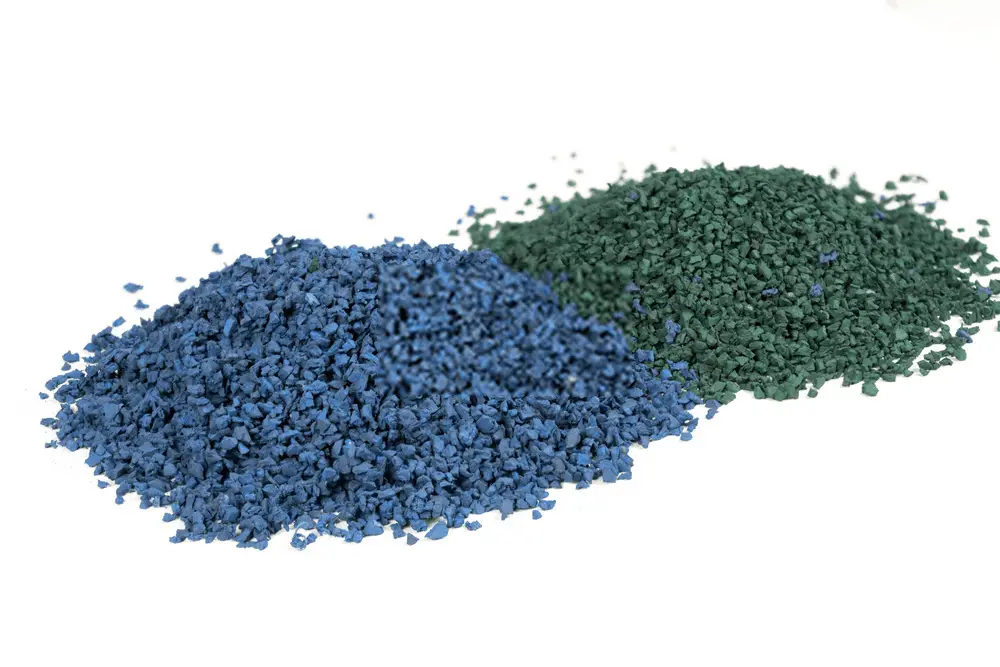
EPDM Rubber is a very effective material for waterproofing your roof. It’s a synthetic rubber material that can be used for an abundance of situations. It is a class M rugged that is made using ethylene and propylene. While it is commonly associated with silicone, the two materials are extremely different. EPDM rubber is primarily used to provide a waterproof coating to roofs. It works great for this purpose. It is also used in vehicles. In this type of environment, the rubber is used to seal windows, trunks, and even woods.
It can also be found in vehicle heaters, oil coolers, water pumps, thermostats, and other places. The material is capable of repelling water, but it can also create noise on vehicles. The material is recyclable and flexible. On top of that, it is efficient. On the low end, you’re going to end up paying $3.25 per square meter. At the maximum, you’ll pay nearly $15 per square meter. Remember that it is available in two thicknesses, 45 and 60 mils. The thickness you choose will ultimately alter the price.
Rubberized Asphalt
Another waterproofing material is rubberized asphalt. This material works great for keeping your home protected from the elements. However, it is primarily found on roofs for commercial businesses. 790-11 hot rubberized asphalt is best for two specific applications. If you’re dealing with extensive vegetative assemblies or intensive roofing assemblies, you’ll want to go with this material. It will prevent problems and provide you with the best results. This material is sometimes utilized to provide a waterproofing cover to RVs and campers. There’s a lot to like about rubberized asphalt. For instance, it is very tough.
It can withstand everything Mother Nature throws its way. Simultaneously, it is very flexible and the moisture vapor permeance is very low. This ensures that you’re going to get good results. The material is commonly used to waterproof bridges, plazas, parking spaces, and commercial roofs. When used on concrete, the material can help cut down on cracking, noise, and hydroplaning. It will also enhance the durability of the underlying material.
The cost of this material will depend on how big the treatment area is. However, you can buy a 4.75-gallon bucket for roughly $50. The material usually dries within 3-4 hours after being applied.
Thermoplastic
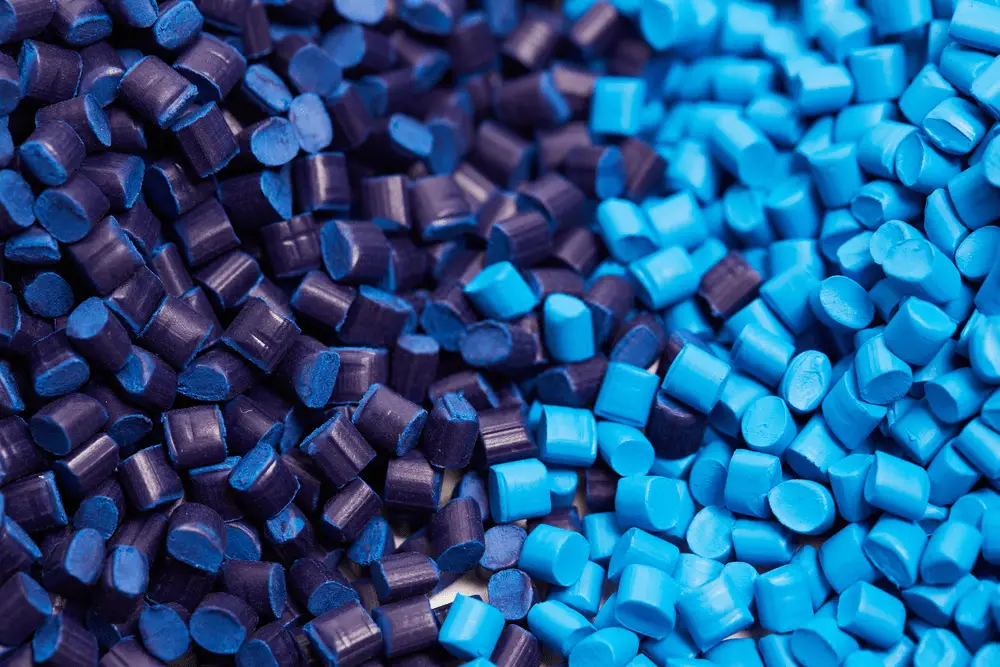
Another very popular waterproofing material is thermoplastic. This material might not be the cheapest out there, but it offers a wealth of benefits. For instance, it is one of the strongest waterproofing materials on the market. On average, it can provide you with 50 years or more of waterproofing durability. This makes it longer lasting than many of the alternatives. When heated correctly, the material will transform from solid to semi-solid. This allows a professional to seal the sheets or panels together. In return, this makes thermoplastic waterproofing more effective for the intended purpose. The material also features elastomers.
This means that it is capable of resisting impact much better than some of the other materials mentioned. Thermoplastic waterproofing can be used for an abundance of purposes. It is particularly good for bladder-type situations. For starters, it would work great for oil booms, spill protection, inflatable watercraft, splints, storage bags, and so much more. The material is often used for pharmaceutical products as well. It has the ability to keep air and liquid out, so it’s great for creating storage bags for food and water.
The material can also be used for fabrics and clothing. In industrial environments, TPU coating can help protect tents, flexible ducting, curtains, pipe plugs, and so much more. It’s also commonly used for split slabs, property lines, elevator pits, tanks, fountains, and decks. The only downside with this type of material is the fact that it’s going to cost slightly more than others on this list. It’s also much more difficult to deal with. This is the case if you’re going to be installing it on your roof. It is possible to pay as much as $10 a pound for thermoplastic. Thermoplastic sheets can cost as much as $42 per roll of 48 inches.
Bituminous Membrane
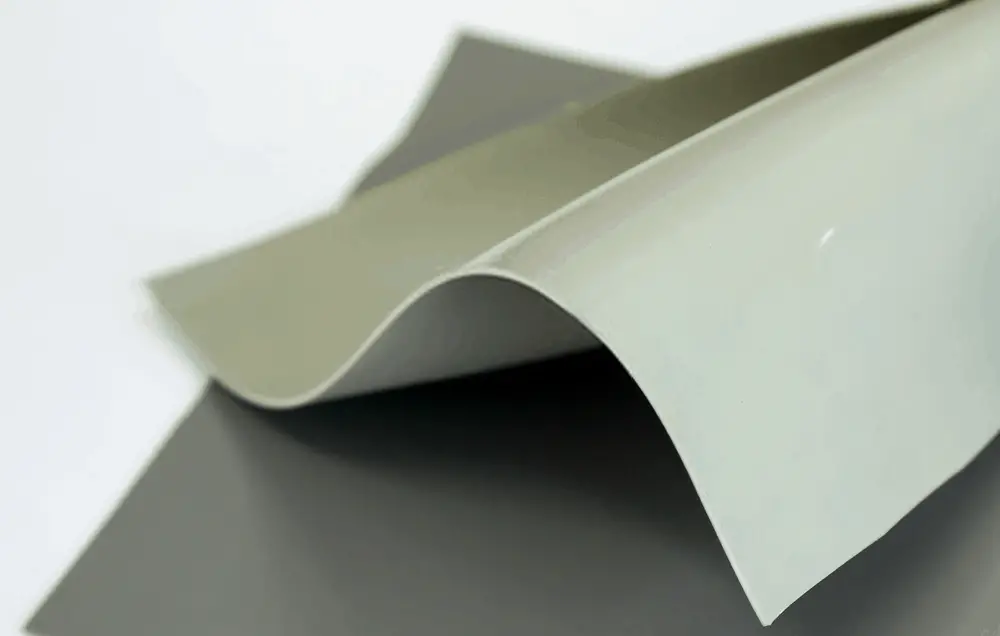
Next, you have bituminous membrane. Bituminous waterproofing works great for many applications. This type of waterproofing is great for commercial and residential buildings. To create this type of waterproofing, bitumen will be combined with a mixture substance. Remember that Bitumen is asphalt or coal-tar. The mixed substance is normally made up of organic liquids which will be very sticky. On top of that, they’re viscous and waterproof enduring. This makes the material very effective for this specific purpose. At the same time, you should know that it can be helpful for many applications. Case in point, it is often used for the construction of roofs. It can be found in the form of roll roofing materials and roofing felt.
Unfortunately, there are some cons associated with Bituminous Membrane Waterproofing. For instance, you should know that the material is made mainly from crude oil. Therefore, it is not considered a sustainable building product. Another thing to note is that this material does not work well in areas that receive extreme temperatures. When exposed to extreme temperatures and a lot of UV radiation, its lifespan is going to be decreased significantly. You should also know that this material is combustible. This can create other problems as well. When applying this material, it’s going to release some fumes. Those fumes may lead to respiratory problems in the future.
While the material works well for the intended purpose, you must be very careful with it. After all, it can cause some health problems and it is not suitable for all areas. This type of waterproofing material isn’t too expensive. On average, it is going to cost around $1,000 to seal your entire roof using this material. However, the maximum cost per square foot is right at around $5.21. The minimum cost is right around $2.73. With this in mind, most people will be able to afford this type of waterproofing material.
PVC Waterproofing Membrane
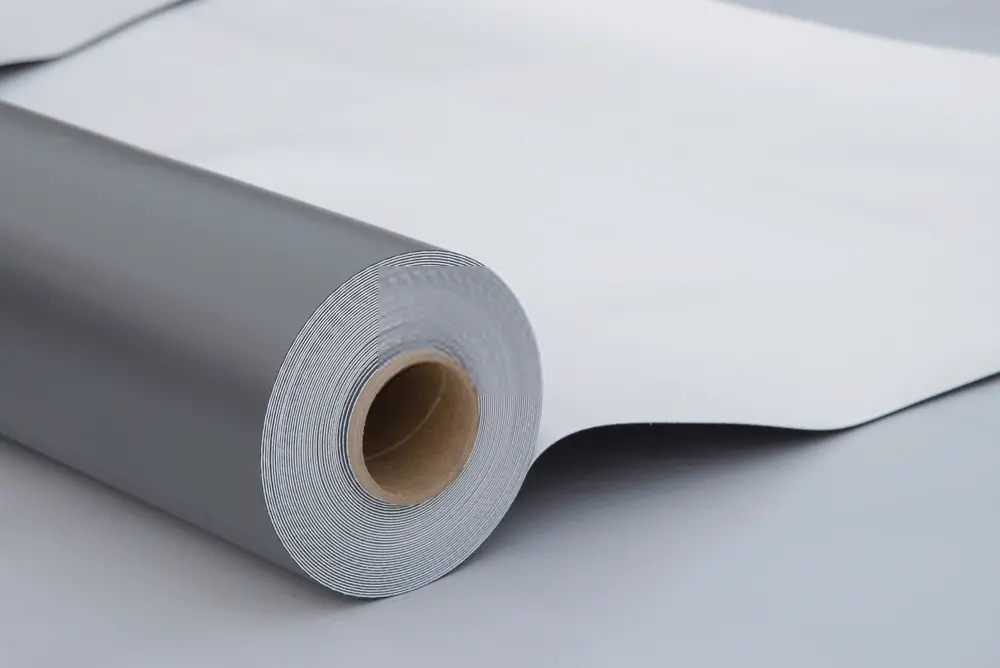
Finally, you have PVC Membrane material. This is a common roofing material that is made from polyvinylchloride. It is primarily used to waterproof roofs. You’ll find that there is a lot of perks associated with PVC waterproofing. For starters, it’s water resistant. You can guarantee that it is going to keep the water out. It is also vapor permeable and this will prove to be a big benefit. This type of waterproofing material is going to feature a reinforcing base. The base is normally made of glass fiber or polyester mesh. While it is mainly used for roofs, it’s also commonly used for tunnels, swimming pools, and underground structures.
You can choose from reinforced or unreinforced membranes. Both are equally beneficial. With the reinforced membranes, you’ll receive more durability. With the alternative, you’re going to have more flexibility and you can rest assured knowing that the material is not going to tear. One thing that sets PVC apart from the others is the fact that it is very easy to install, and it has a significantly longer service life. The only potential flaw is the fact that this material will allow moisture to escape out of the building’s roof area.
It’s possible to buy rolls of PVC waterproofing membrane. They come in lengths of 60 to 75 feet generally. The cost depends but you can expect to pay as much as $55 per foot for this waterproofing material.
Final Thoughts
At the end of the day, there are many unique types of waterproofing materials. Some are more effective than others. With this in mind, you need to know that not all of them are equal. Therefore, you must take some time and energy to find out which one is going to work best for your individualistic project requirements. You need to research these materials to find out which one is going to be most effective for your precise application. You have learned more about these materials above. Take your time and find the one that’s going to be best for your home.
Related Questions
What Is Cementitious Waterproofing?
Cementitious waterproofing is a unique type of waterproofing that relies on cement. When used correctly, the cement can create a moisture barrier for cement walls and floors. The barrier will come in the form of epoxy or latex mixes. These will be applied as a sealant for the basement or other foundations. Suffice to say, cement waterproofing can be very beneficial for many purposes. However, it’s primarily used in the basement or crawlspaces. This type of waterproofing is great as long as it is used for the right applications.
How Does Crystalline Waterproofing Work?
During your search, there is a good chance that you’re going to run across the term crystalline waterproofing. You may not understand it fully. Crystalline waterproofing is an effective and economic way to add waterproofing to your home. In this type of situation, the professional will use silicone-based crystalline to waterproof the object in question. A contact angle will be created between the surface of the material and the liquid drop. The angle needs to be higher to ensure that the surface is hydrophobic. This technique modifies the surface energy to ensure that it is going to be protected against water.
One of the best aspects of crystalline waterproofing is the fact that it works exceptionally well. On top of that, it can be applied easily. The spray can be applied to any surface within a matter of minutes.
